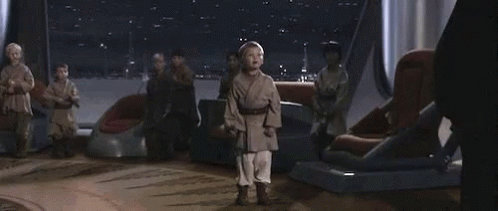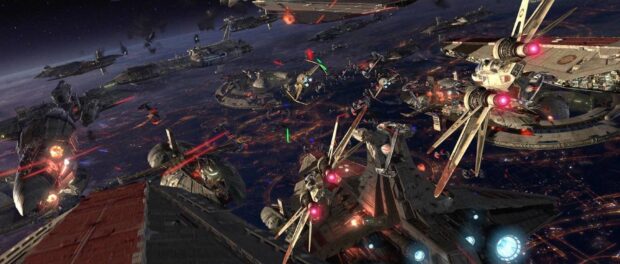In 2005, we watched the last Star Wars movie.
Or at least, that was the idea at the time. After expanding the Star Wars universe with The Phantom Menace and continuing it through Attack of the Clones three years later, George Lucas brought the twin sunsets down on his saga for good. On the occasion of the film’s 20th anniversary, we know that didn’t quite pan out.
Say what you want about the prequels — and I do, when asked and sometimes when not — but Revenge of the Sith delivers on much of the promise of that elongated setup. As Star Wars fans, we’d been tested over the previous decade, first asked to accept new digital additions to the original films, then to engage with a trilogy that felt stylistically very different.
The first 25 minutes of this chapter contain some of the most exciting and well-executed spectacles of sound and vision in the entire series. Lucas takes the frenetic energy of the Return of the Jedi space battle and infuses it with all the modern technology and “laser sword fights” (as he insists on calling them) he can muster. It’s a masterclass in digital effects and action storytelling.
And even with its longer running time (on release, the third-longest in the saga), Lucas gets the pacing just about right. There’s a lot of ground to cover — the downfall of Anakin and democracy, the end of the Jedi Order, the rise of the Empire, the birth of Luke and Leia — so the extra elements involving Dooku and Grievous might seem grievously superfluous. Yet somehow, even with that excess, they mostly work in Lucas’ grand visual storytelling.
In 2025, those political undercurrents feel even more pointed. The film’s depiction of a republic eroded from within — where emergency powers are granted in the name of security, dissent becomes treason, and troops are literally deployed to silence the opposition — resonates more sharply than it did two decades ago. It reflects the shift from Lucas’ optimism in the late 1970s to the more cynical political outlook of 2005, as the second term of George W. Bush began against the backdrop of the Patriot Act and the forever wars in the Persian Gulf.
There are moments here where you can almost pinpoint where Lucas went wrong with the trilogy. Take the heat-filled finale, for example. The visual spectacle of these titans of the Force clashing above an unrelenting magma flow should be enough. Yet Lucas fills the frame with constant motion — little robots collecting debris, background chaos — unable to leave the image well enough alone. We saw the same instinct in the Special Editions of the original trilogy. Contrast this with the Obi-Wan Kenobi series, arguably a direct sequel to this film, which features the most stripped-back lightsaber battle in the franchise.
Revenge of the Sith is still plagued by some of the same issues as Attack of the Clones: the unearned love story between Padmé and Anakin, the occasional cringe-worthy line, and that one very big “Nooooo!” at the end. Lucas stops short of delivering something for everyone, but perhaps that was never the point. He was making these films for himself.
And somehow, in doing so, he delivered the darkest chapter in the saga, with the horror of Order 66, the Jedi Temple massacre of the Younglings, the brutal birth of Darth Vader, the death of Padmé, and the shattering of the last remnants of the Republic. At least until the Disney+ era, it comes closest to being the Star Wars I loved as a kid, even if it took me a little longer to appreciate it.

The Sith Awakens
For Lucas, Revenge of the Sith brought his saga full circle in more ways than one. It not only incorporated ideas he’d been playing with since before 1977, but revived a title originally planned for what was once marketed as Revenge of the Jedi.
Here in 2025, Star Wars is something very different from the world Lucas left behind. As the last Star Wars film distributed by 20th Century Fox, it marked the end of an era. On October 30, 2012 — seven years after the release of Revenge of the Sith — Disney acquired Lucasfilm for over $4 billion. Since then, with a new trilogy beginning with The Force Awakens, Star Wars has become less an event and more a regular fixture, across both film and high-budget television.
Today, Revenge of the Sith is remembered not just on its own merits, but for what it came to represent. Just as the original trilogy defined fandom from 1977 to 1999, for a whole generation, the prequels were their Star Wars. As the galaxy expanded through The Clone Wars TV series, and as those fans and creators went on to shape new stories under Disney, Revenge of the Sith now stands as either the last gasp of the old guard, or the dawn of something new.
Be sure to check out more of our film retrospectives, brought to you at a completely random pace!






